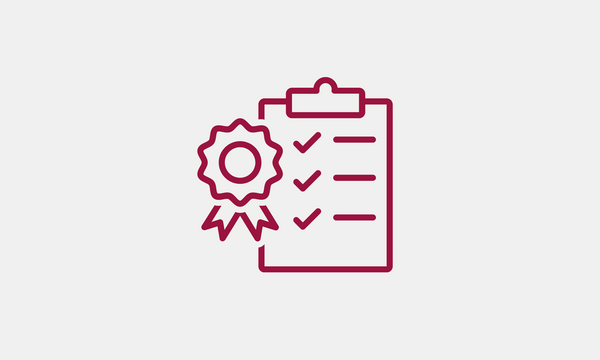Offering farmers fresh opportunities with improved data management

Oluseyi Taylor
June 15, 2020

Our fellowship team is composed of Rola Kuidir, Zola McAdie and Seyi Taylor (that’s me!) — we’re working with the Ontario Ministry of Agriculture, Food and Rural Affairs (OMAFRA) to help them better leverage data in order to protect crops and support growers.
If you’re anything like us, you don’t do a lot of thinking about all the people and processes that go into putting food on your plate. Most of us have no idea that there is an entire department of professionals dedicated to crop protection — researching new techniques for pest control, tracking a multitude of factors that affect the health of crops and how they interact, and working with industry to encourage best practices. The Ontario agriculture industry was valued at 47.7 billion dollars last year — and is the source of livelihood for thousands of people.
To do their job effectively, crop specialists need data, which they gather from research into subjects like pests, or groups of crops. This gives insight to information on the effectiveness of a particular pest control method for example, or goes towards seasonal infestation predictions. The ideal situation would be for data to be generated immediately, and delivered in real-time. Unfortunately, this does not happen. The data generated comes unstructured from a variety of sources, from Excel sheets on specialists’ computers, to websites without Application Programming Interfaces (APIs) or feeds, or even offline on sheets of paper. As a result, specialists cannot access all the data they might need quickly or efficiently, leading to delays in generation and delivery of actionable information to growers. This can create risks — mainly the inability to protect crops quickly and use the best methodologies, before the pest can cause too much damage — In 2017, one pest caused an estimated 80 million dollars’ worth of crop loss.
“Our challenge is to help speed up this process — allowing specialists to deliver accurate insights to growers in real time, and giving them the freedom to explore fresh opportunities presented by better data management.”
Getting Started
On arrival at OMAFRA, we quickly got around to the work of researching the problem space. We conducted interviews with stakeholders in the process of user research, as well as dug into the context we would be working in.
Crop Specialists
We held numerous meetings with crop specialists to determine how they currently retrieve, access and analyse data, as well as how they publish insights derived from this. For uniformity, we designed an interview rubric loosely based on our question framework used in our four-day onboarding sprint. Our aims were to discover the data roadmaps for each specialist, identify other user groups involved in it, and understand the bottlenecks and pain points they experienced.
Meetings with Facilitators and Partners
Though they don’t have direct influence over the data roadmap, we also met with departments and team members that are critical to the success of our project. These include:
- Land Resource Cluster (LRC) — which is the support team assigned to support OMAFRA in the delivery of IT projects
- Digital OMAFRA — which undertakes the execution of the digital strategy for OMAFRA, and is deeply invested in educating OMAFRA staff on digital initiatives and capabilities
- Other groups for advice on accessibility compliance, communications compliance, etc.
Meetings with Growers
Growers have two functions in this process. They are OMAFRA’s main clients — consuming the insights produced by the crop specialist team. Some of them also play the role of data generators, providing raw data for analysis. Our interviews with them have been centred on understanding both their experience of sending data through OMAFRA, either directly or through a variety of apps and/or partnerships, as well as how they consume the generated insights.
The Problem
To give you some clarity on the problem we’re facing, we’ve drawn up a summary data roadmap for the specialist experience, highlighting bottlenecks and pain points along the way:
Specifically,
- there are no standardized data formats for collection and storage of data
- there is no centralized form of storage for data, or any means to quickly and easily access data not stored with a particular specialist
- external data sources have no APIs or other feeds for transmitting data
- when data is collected directly (novel data), there is very little data verification done until the specialist gets their hands on it
- there aren’t enough tools to help specialists adhere to regulatory requirements for accessibility and French translation
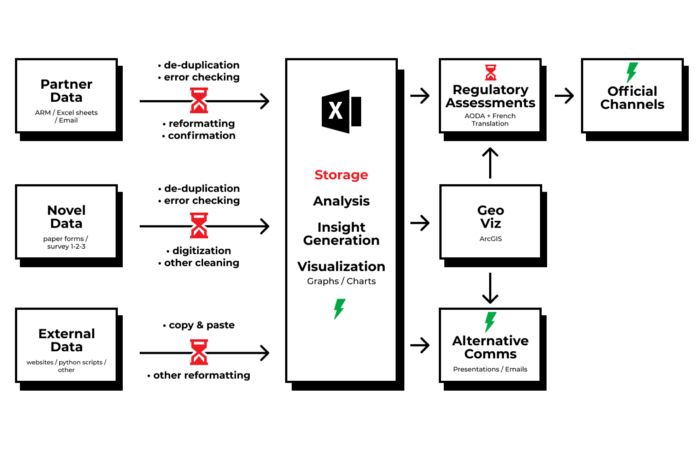
It’s this combination of issues that have made the specialists’ work so difficult. Over the next few weeks, we will zero in on a problem space to focus on and work on delivering a solution.
Sprint Zero
We had the opportunity to conduct our Sprint Zero session with about 30 members of the partner team. The group was primarily composed of crop specialists, with a smattering of support staff working in various technical functions.
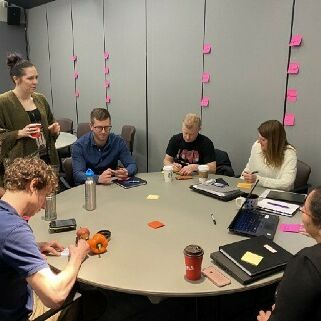
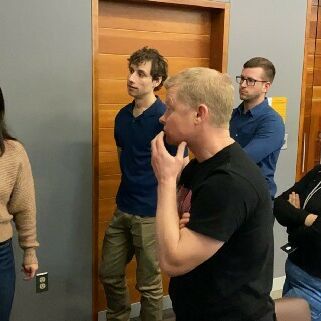
People gathered together for a meeting during Sprint Zero at OMAFRA offices in Guelph, Ontario.
The aim of the sprint was to reveal pain points across the entire group, as well as align expectations with our primary user group — the crop specialists. We also took the opportunity to use some of the techniques we learned during onboarding with our government partners. Over the course of the day, we ran two exercises: the success spectrum, and value proposition framework.
The reception to the event was outstanding, with one of the specialists providing this tongue-in-cheek commentary, “I usually don’t like anything with sticky notes, but this was not a complete waste of my time.” His colleagues said it was high praise. We’ll take it!
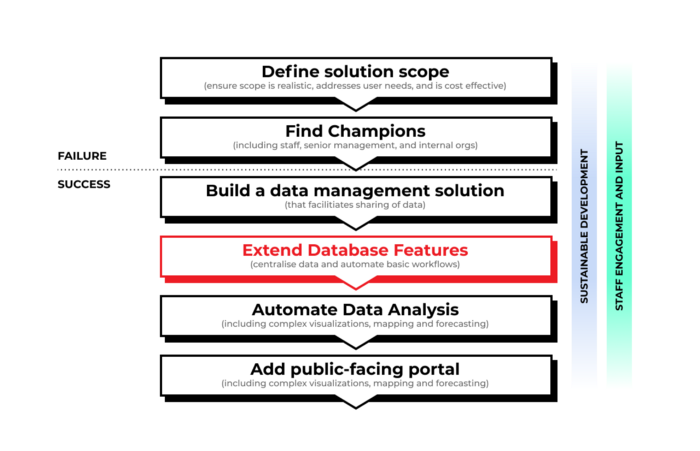
From the exercise, we discovered our partners were aligned on the need for more resources and support for users as they collect and analyze data. We also outlined a roadmap for success: a central database with simple workflows to facilitate data sharing.
The Impact of COVID-19
COVID-19 and the resulting restrictions on movement meant that some of our activities were restricted. We had planned on doing grower interviews at farms and offices around the province, and instead we did these via phone and video calls, which we were happy to find worked effectively.
We had also planned to do a series of internal workshops and training events to help OMAFRA staff learn more about agile and web technologies. Those had to be postponed, and we are currently working on the possibility of executing those remotely. That being said, we did write a primer on working from home for our government partners — you can read it here.
Looking Ahead
The vision of our partner team is to deliver the best services to growers, thereby protecting and enhancing the agriculture industry and providing the best value to taxpayers. As we wrap up our research phase, we have gained a lot of clarity and visibility into the obstacles to achieving that vision. We’re very excited to be here and really look forward to building a solution that works for our partners, and as a result, for all Canadians!
This project has been funded in part by the Canadian Agricultural Partnership, a federal, provincial and territorial initiative.
